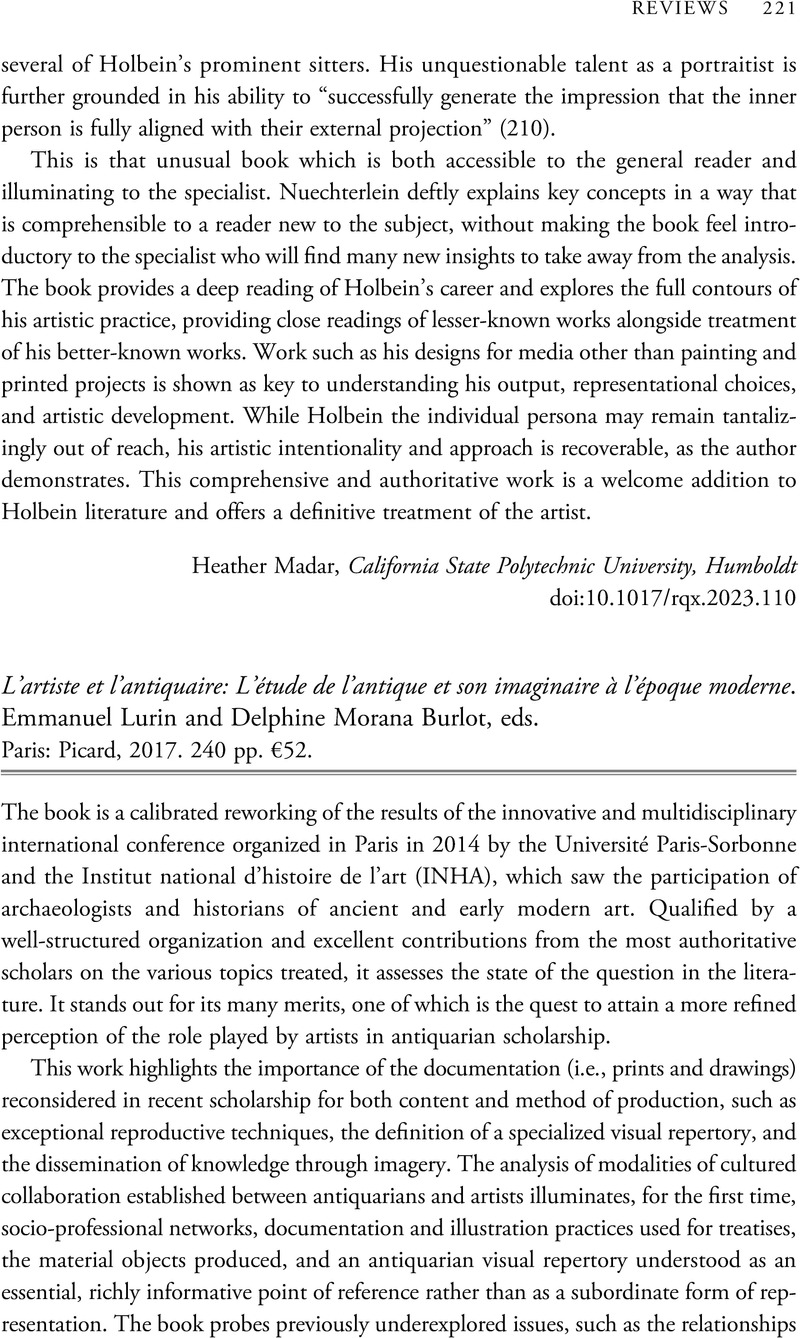No CrossRef data available.
Article contents
L'artiste et l'antiquaire: L’étude de l'antique et son imaginaire à l’époque moderne. Emmanuel Lurin and Delphine Morana Burlot, eds. Paris: Picard, 2017. 240 pp. €52.
Review products
L'artiste et l'antiquaire: L’étude de l'antique et son imaginaire à l’époque moderne. Emmanuel Lurin and Delphine Morana Burlot, eds. Paris: Picard, 2017. 240 pp. €52.
Published online by Cambridge University Press: 17 April 2023
Abstract
An abstract is not available for this content so a preview has been provided. Please use the Get access link above for information on how to access this content.

- Type
- Review
- Information
- Copyright
- Copyright © The Author(s), 2023. Published by the Renaissance Society of America



